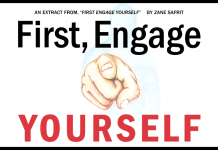
The American Heritage Idiom Dictionary defines “to bet the ranch” as “to risk everything you have because you are certain of success.” This idiom most likely began at poker tables in saloons of the American Wild West. Men would be so sure of their “hand” that they were willing to “bet the ranch”… often losing everything.
For this article, let’s think of “the ranch” as our “brand.” We will explore the slippery slope of constant “cuts” to budget and the fact that, with each and every restriction imposed on customer-facing business units, the risk to brand increases. Each and every consideration for cost-cutting measures must be evaluated closely against the question, “Are you willing to bet your brand on it?”
Sadly, many who face cost-reduction efforts receive directives that are articulated in relatively simple terms: “Cut 15% off your budget for next year.” I have rarely seen a process within these types of directives that includes close scrutiny of “cuts” and the impact on “the brand.” One can only imagine the initiator(s) as the cowboy in the saloon… betting the ranch. The difference is that, within a corporate environment, it is the brand that is bet with a risk assessment that enjoys nowhere near the level of effort required to avoid brand damage. Why is it then that demands for deep budget “cuts” are not accompanied by a risk assessment? My guess is that it would simply be too scary.
The directive to “cut,” if accompanied by a true risk evaluation (especially if the “cut” demand has become an annual event), would yield information that illustrates the tradeoffs. If you are simply caught in this spiral of denial regarding budget dollars it is critical that as a leader you articulate the impact areas of such “cuts.” You must also prepare those requesting the “cuts” for the performance challenges and changes that will occur in performance and experience levels.
We are working in an era of massive change… at every conceivable level. We are inundated with demands from customers, executives, shareholders and ourselves. We have drunk from the fountain of “do more with less” for so long that we may have “bet the ranch” on the certainty that ongoing “cuts” to customer-facing business units will be easily absorbed with no risk to brand or reputation. In other words, there appears to be a willingness to “bet the brand” on changes which will be required to meet NEW objectives.
What I have seen lately is a level of executive certainty that severe budget “cuts” are not an insurmountable reality. (This is especially confounding when made by companies with huge amounts of cash reserves.) This belief is sustained by leaders unable or unwilling to craft a compelling risk assessment.
Betting the brand is a brazen and dangerous game, and one in which the frontline leader will be responsible for maintaining performance, morale, quality, etc., while at the same time reducing the very activities that support these outcomes. The architects of the plan generally are not the ones suffering the fallout. The business unit leaders are the ones on the hook… despite the fact that the directive lacked any kind of reality check. It kills me when I see executives unhinged because of a backlash from these efforts. They act surprised and disappointed (but rarely responsible) even though they were the ones willing to “bet the brand.”
Here are some “brand risks” that I have seen: longer times to respond to customers, reduction in training, elimination of quality programs, hiring freezes, increased attrition, poor integration of technology, lack of business analysis, and shifting of functions to “corporate” teams (which may or may not be equipped, trained or have the capacity to handle associated tasks). And these are only the most obvious. The impact on morale in these organizations is palpable. Trust me—if this is the case, your best folks are exploring alternative opportunities!
As a frontline leader, it is imperative to address the impact of “cuts” and adjust KPIs to reflect “cut” impacts to the executive level. Before adopting any “cut” program, you must ask yourself how it will be achieved. When reviewing the impact, ask yourself, “Am I willing to bet our brand on this?”—because that is exactly what you are doing. Interestingly enough, the time between the directive and the damage may be a quarter or two. The pain may emerge slowly. But it will come…
In spite of the downside of budget-cut directives, all of us today must be on the lookout for cost-reduction opportunities, efficiency gains, process improvements, etc. When we engage our teams in the consistent pursuit of efficiency, we will often identify low-hanging fruit ripe to be harvested.
This is a proactive discipline of routinely integrating audits of the most frequent, critical and complex tasks; making adjustments; and reporting impact and options—before the ax falls. Engage the senior-level budget architects in an ongoing dialogue regarding the current state of the contact center. Demonstrate your due diligence via supporting data and documentation. Submit budget requests under the heading of INVESTMENT in the brand rather than simply as the cost of doing business… perhaps a new relationship will emerge. Then again, maybe not. But as a leader you will have honed a very marketable skill-set and you will leave the gambling table without having to “bet the ranch.”
Ultimately, one underlying question remains whenever major changes such as budgets, staffing, KPIs, training, etc., are proposed… “Are you willing to bet the brand on it?”



